Phil Green is Mojaloop Foundation’s new technical solutions consultant. He’s been brought on board to assist countries in building the requirements and business case for national instant and inclusive payment systems using the Mojaloop reference tools. Zambia has demonstrated strong skills and a willingness to build sovereign digital infrastructure, and we hope that with Phil’s help, the Mojaloop Foundation can contribute to that vision.
Before he gets too busy, we took the opportunity to speak with him to find out more about his experience and why he’s excited to be involved with the Mojaloop Foundation.
Connect with Phil on LinkedIn >
Q: Tell us about yourself. What has your career path been, and how did you become interested in the Mojaloop Foundation and its mission?
I studied Computer Science at the University of Cape Town, so I’ve always had an engineering mindset. My first few jobs were in payments, including a role at South Africa’s then-premier payment switch, which is now called EasyPay.
I moved to the UK to work for Goldman Sachs on Equities Trading software that managed high speed, high volume, and high value flows. I was there for six years, and that’s where I really learned how to develop and maintain systems that can’t ever switch off.
After I got my MBA, my focus turned towards impact in Africa, most notably Zambia, where I come from.
I took on a job for the Global System for Mobile Communications Association (GSMA), enhancing and evangelizing the GSMA Mobile Money API specification. One of the first things I did was sit in on Mojaloop meetings. I also assisted with infrastructure provision for one of its first instances.
I had a number of positions after that, including with Afrimoney, a mobile money provider based in Gambia, DRC, Angola, and Sierra Leone. But after two years, I still really wanted to have an impact in Zambia. That’s when I came across this opportunity with Mojaloop.
What interests me about Mojaloop is that it’s open source, which allows developing countries like Zambia to take ownership and empower themselves. Secondly, it’s produced by a community. It offers a massive potential for impact because of the scale we can achieve. Lastly, I am fascinated by high-performance, high-capacity systems that can’t fail because that’s what I’ve spent almost a lifetime working on.
Q: Tell us about your role with the Mojaloop Foundation. What will your main responsibilities be?
One of my chief roles will be understanding and defining the requirements for an IIPS in Zambia. This will involve assisting potential operators in understanding their requirements and building a case for using Mojaloop.
As part of that, I’ll be scanning the Zambian ecosystem to see what people need and can benefit from. This will also feed into Mojaloop’s work streams so we can ensure the product is fit for purpose.
Q: What are you looking forward to most about your role, and what do you hope to accomplish?
I’m really looking forward to getting a deeper understanding of the Zambian environment: what the challenges are, what solutions people are looking for, and then helping to realize those solutions. The ultimate goal is financial inclusion and scale through a Zambia-controlled, Zambia-operated IIPS and, hopefully, a Mojaloop switch enabling that.
For me, it’s also about providing a platform that Zambian startups can innovate on. I have goosebumps thinking about it!
Q: What have been some of the Foundation’s most significant accomplishments to date? Are there any particular projects or implementations that you find exciting?
It’s difficult to choose. The forming of the Mojaloop Foundation and its community are impressive because it’s not easy to form a foundation around software, at least in my mind as a technical person.
The continual evolution of the project has also been exciting, as has been the ongoing
support of the Bill and Melinda Gates Foundation.
Running a proof of concept in Kenya is an exceptional feat, given that you have one player massively dominant in the oldest mobile money market.
Q: What do you consider to be the biggest challenge in the digital payments landscape?
When I look at digital payments, I think mostly about the underserved. And when I think about the underserved, I think about cost — but maybe it’s more about cost structure and cost structure over time.
For example, in mobile money, you have agents who take cash and digitize it. Those agents need to be paid enough money to make a living. So, the problem becomes having the cost structures and revenue models in place to ensure that you can pay agents and keep digitized payments free or low cost. That’s a big challenge because there are a number of actors with different interests, and those interests may change over time.
Q: And what keeps you excited and motivated to help further the Foundation’s mission?
It’s exciting that we can offer a low-cost product that allows innovation and can change the way digital payments work. It’s empowering because it’s built collaboratively but allows us to change it however we want.
I think that Mojaloop can be part of the African Renaissance. It’s something that Africans can build for Africa in a game-changing way.
Working on Mojaloop also gives African countries a chance to create a large cohort of developers, DevOps and infrastructure people in Africa, and that’s just unbelievably special. I’m hoping that we get to help build this whole digital ecosystem.
